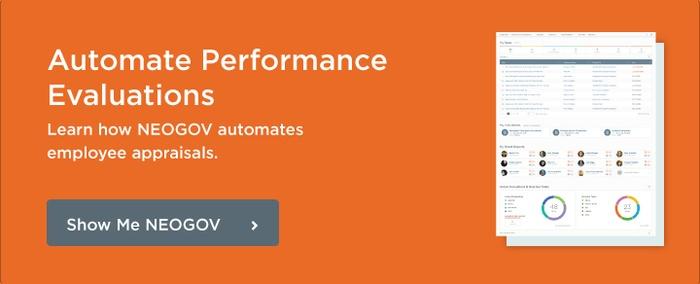Learn how giving your organization’s performance review process a thorough overhaul can radically rejuvenate your employee engagement.
Performance reviews are often unloved. The feeling is justified when the performance review process is outdated and disconnected from your employees’ day to day work, but that doesn't mean you should eliminate or cut back your evaluations. While changing your organization’s entire performance review process isn’t simple, the rewards are worthwhile. It can:
- Improve your organizational culture
- Foster and recognize high-performing employees
- Support employee growth and improvement
So, how can your organization begin to change your performance review process for the better? Let's look at four simple steps.
1. Start with a Clean Slate
Also known as the “burn it and start over” technique, starting with a clean slate means you can accomplish something greater than simply changing your performance review process: You can create an all-new process that prioritizes the future over the past. This allows you to cleanse your performance review process of the negative legacy of old mistakes, bad habits, and false assumptions.
To start with a clean slate, explain that you’re open to any ideas, tools, methods, and structures that may motivate people to constantly improve their performance. Take the opportunity to build trust by engaging everyone in changing the performance review process for the greater good. And be ready to squelch the “that’s not how we do it here” attitude that keeps valuable new ideas from being voiced and implemented.
2. Define the Purpose Across Teams
Many of your employees believe they already know why your organization does performance reviews. But do they really?
If you haven’t communicated the purpose clearly, there may be discrepancies in how employees perceive and use performance reviews. They might even think performance reviews are pointless – and if your performance evaluations haven’t lead to purposeful action at your organization, they may be right.
To give purpose to your performance review process, encourage your employees to ask what really matters. Don’t let managers just talk amongst themselves. Facilitate open, honest dialogue that ensures all your employees are heard and everyone listens to each other. Create collaborative conversations that break down team silos and eliminate management isolation.
Furthermore, talk together about the ways that performance reviews can support both the professional and personal growth of individuals as well as the overall success of the organization.
3. Find a Solution that Fits the Process
There’s no universal performance review process, and the best solutions are designed to meet a variety of needs. To change your performance review process, you’ll want to carefully evaluate the solution you use to manage the review process.
If you choose a rigid solution, you will likely be forced to compromise, which can result in less effective performance reviews and outcomes. Instead, choose solution that can be adapted to fit your purpose. Look for a flexible set of methods and performance evaluation tools that can evolve and scale with your appraisal process.
4. Match Measurements to Your Purpose
Performance review processes are more effective when you track goals and KPIs that directly connect to your purpose. Make updates to ensure your measurements give employees, managers, and the the entire organization the information needed to make important decisions and change future behaviors.
As you change your performance review process, measure only what you plan to act on. This helps you avoid an overwhelming data dump of information. Collect data that will be useful in tracking employee performance and motivating employees to grow and develop in the future.
Lastly, be sure to measure performance regularly so you can nurture employees to continuously improve their performance.
Final Thoughts
With the right performance review process in place and tools to support it, your agency will benefit from more a productive, high-performing workforce that supports your purpose. Get started by improving strategic alignment between employee and agency goals today.

